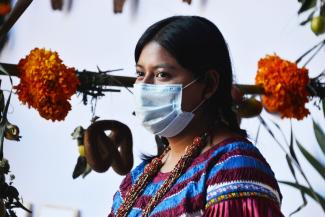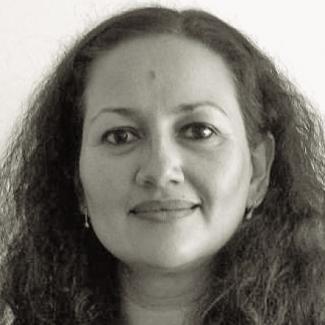Prejudice
Mexico’s racial divide

Officially, racial distinctions do not exist in Mexico. After the Mexican Revolution in the early 20th century, the government embraced the notion of “mestizaje”, or mixed race, to forge a unified identity. All Mexicans came to be considered “mestizos” – people of mixed European, Indigenous and African race – at least culturally, if not biologically. From the racial point of view, Mexico was to become one big, happy family.
This blanket terminology is deeply misleading and conceals a traumatic colonial history (see my essay in Focus section of D+C/E+Z e-Paper 2017/11). In fact, racial and ethnic identities are deep and abiding, and they remain major sources of conflict. Mestizaje, which began as a way to remove ethnicity from the national consciousness, unfortunately now obscures that racism still exists.
Consider the use of racial labels in everyday conversation. The words “Indian” (indio), “black” (negro), and “dark” (prieto) all have negative connotations. They are considered so harsh that many progressives use them only in the diminutive, to blunt the insult. This is especially true when they refer to a minor. Adding the diminutive implies making allowances, as in: “poor fellow, it’s not his fault he was born like that”. In contrast, the terms for “fair-skinned” (güero and its diminutive güerito) express approval and acknowledge superiority.
Racism in Mexico goes well beyond words; it has real-world consequences. Last year, the National Institute of Statistics and Geography (Instituto Nacional de Estadística y Geografía – INEGI) released a National Survey on Discrimination, which is exceptional government practice because it gathers racial data. The survey showed that, in 2020, 24 % of indigenous people had experienced discrimination and 75.6 % felt under-valued.
In the same survey three years earlier, 49 % of indigenous people said their rights were not respected. They experience such lack of respect in the form of limited access to jobs and social benefits. All too often, services are denied – including health services, which in Covid-19 times is particularly dangerous. Indeed, many primary-school teachers forbid the use of indigenous languages in class, thus supressing these languages in favour of Spanish. Non-Spanish speakers typically do not have the same access to justice as Spanish-speakers.
Scholars from Vanderbilt University in the USA have confirmed the existence of race- and ethnicity-based discrimination in Mexico. They found that lighter-skinned Mexicans complete more years of schooling than darker-skinned ones – 10 years compared to 6.5 years. Since Mexico does not usually collect racial data, pollsters working for Vanderbilt’s Latin American Public Opinion Project themselves categorised respondents’ skin tone using an 11-point scale.
In short, race matters in Mexico – contrary to the ideology of mestizaje. Indeed, a significant proportion of Mexicans self-identify as members of racial or ethnic groups. Studies have shown that up to 60 % self-identify as mestizos, but the rest see themselves as indigenous (30 %), white (nine percent) or other (one percent). According to Oxfam, about 70 % of the indigenous people are poor – the figure for other population groups is 39 %.
Heated debates
The racial divide has become an increased focus of national debate since the left-of-centre government of President Andrés Manuel López Obrador took office in 2018. To be sure, the government continues to issue optimistic statements about the narrowing of economic and social gaps. But public discourse on social and national media tells a different story. People’s physical appearance and ethnicity are clearly part of the conversation.
Consider, for example, the debate over compliance with Covid-19 restrictions. Elites, who are mostly fair-skinned, have been able to stay at home comfortably. Their houses are big enough to allow storage space for food for long periods, they usually can work from home, and their children have the technology to attend school lessons remotely. Members of these elites have criticised disadvantaged people for breaking the rules, going to work and even bringing their children along. Those children, however, lack the technology needed for distance learning.
Debates of this nature are becoming more frequent, prompted by politicians’ speeches and videos that go viral. In the ensuing discussion, name-calling and slurs occur again and again.
For example, the term “whitexican” has gained popularity on social networks to describe privileged elites who disparage or discriminate against groups they consider inferior. In popular parlance, a “whitexican” sees racial and ethnic minorities as ignorant and incompetent, rather than as victims of ingrained injustice. Individuals accused of being “whitexicans” have countered they are victims of “reverse racism” – showing that some attitudinal gaps are difficult to bridge.
Some argue that such polarisation is evidence of classism, not racism. That argument only makes sense to some extent, because racism and classism clearly overlap. The convergence of wealth, power and light skin is actually ingrained in the system. At the same time, people with darker complexions are especially likely to suffer because of organised crime and government action to repress it. The militarised war on drugs has claimed some 300,000 lives since 2006, according to civil-society activists.
Researchers have found that, especially in areas where the cartels control much of the land, many indigenous or Afro-descendant people have been:
- forced to participate in the cultivation of drugs,
- stripped (once again) of their lands, and
- suffered forced displacement.
On the other hand, the lowest ranking army soldiers, who are most at risks, are from poor families.
At the same time, dark-skinned Mexicans who have done well economically still face discrimination, because some prosperous whites do not expect a person with a dark complexion to be their equal. Occasionally, a person wearing ethnic clothing is asked to leave a high-priced restaurant – for the same reason.
Racial divisions between indigenous people and those with European ancestry also appear in public debates related to the colonial legacy. A few months ago, President López Obrador asked the Spain’s government to apologise to Mexico on the occasion of a significant anniversary: the fall of the Aztec stronghold of Tenochtitlán on 13 August 1521. He saw this apology as an act of symbolic reparation for historical damage to indigenous peoples. Spain flatly refused.
The incident caused an uproar on social media, with tirades on both sides highlighting the racial and ethnic divide. Indigenous groups favouring the president’s request pointed to other countries that have apologised for historical damage. The president’s opponents, by contrast, argued that the Spanish colonisation was a civilising process, not a damaging one. Many of them have European ancestors, and they consider the president’s request an insult to Spain. Some even said he exposed Mexicans to international ridicule.
The pernicious influence of racism goes far beyond fostering a self-defeating belief among some disadvantaged groups that dark-skinned Mexicans are to blame for failing to overcome the colonial legacy. Instead, racism affects thinking at all levels of society, and poses a formidable barrier to economic progress for large segments of the population.
Mexico’s national media are part of the problem. Indigenous people are mainly absent from shows depicting daily life. When they do appear, they are mainly servants to their more important and successful white employers. Afro-Mexicans are also nearly absent from national media.
Mixed-race conundrum
The irony behind mestizaje is that historically, before the Spanish conquest in the 16th century, the territory now known as Mexico was ethnically diverse. In an effort to dehumanise native groups, the conquerors began to treat them as an undifferentiated mass. The same process was applied to slaves from Africa and Asia. The colonisers introduced a fixed hierarchy based on skin colour, with whites at the top.
After its war of Independence in the early 19th century, Mexico officially abolished this caste system. But something of the colonialist attitude has remained. The “mestizaje” ideology notwithstanding, inter-racial mixing was neither a universal process, nor a smooth one. It followed a variety of configurations and responded to a variety of migration patterns in different regions of the country. It is fine to strive for national unity – but in Mexico, it has to be unity in diversity. Ignoring racial disparities does not help.
Virginia Mercado is a researcher at the Universidad Autónoma del Estado de México (UAEMex) and an instructor in peace and development studies.
virmercado@yahoo.com.mx








